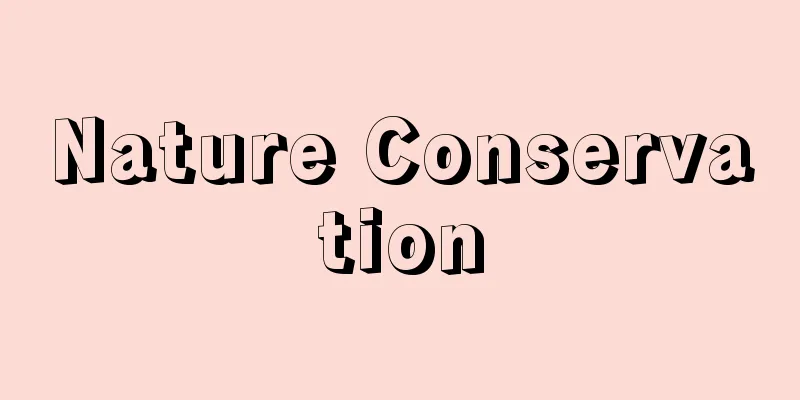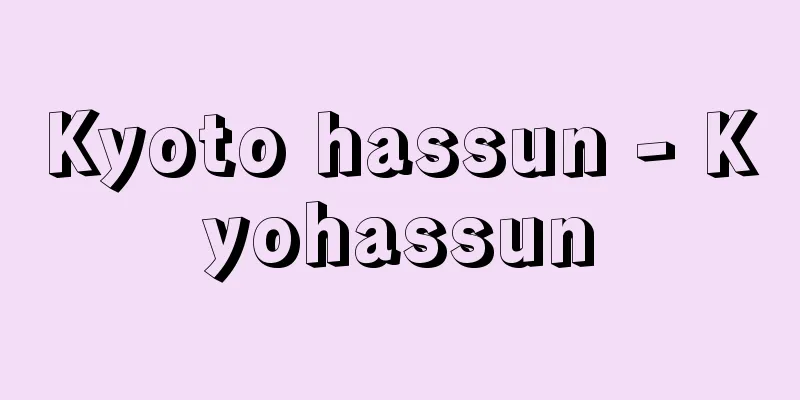Nature Conservation

|
It means to conserve and protect the natural environment for humans. In a very broad sense, the idea of nature conservation has been around since the beginning of human existence. There is no doubt that people have tried to conserve the natural environment in some way and to prevent its deterioration for the sake of their lives in relation to the natural environment in which they live. However, the nature conservation that is recognized and emphasized in modern times is different from this perception. It is based on the recognition that destruction of nature is progressing and that humans themselves are playing an important role in this destruction. In other words, given the fact that many species of living things have been made extinct or are on the verge of extinction by humans, it is believed that in order to protect such wildlife, humans themselves must first limit or correct their activities. In short, it is an attempt to take positive measures, such as setting up protected areas that are not affected by human activities, and has something in common with the protection of buried cultural properties that are exposed to destruction or disappearance. At the same time, there is an ecological awareness that human activities affect other living organisms through air and water pollution caused by waste from daily life, industry, and the military, and that the effects ultimately rebound on humans themselves, and that this is not limited to a specific region, so it is emphasized that the relationship between nature conservation and human activities should be considered on a global scale. As with environmental issues, there are many different opinions regarding what constitutes nature to be protected, and the measures taken to protect it also differ accordingly. If there is no place left on Earth that is not affected by human influence, then there is no nature that can be contrasted with humans. However, humans are also part of nature as a type of living organism. Ideological arguments are futile. In 1958, the British ecologist Elton stated that his belief in "nature conservation" is "the maintenance and enhancement of landscapes with the maximum ecological diversity in all areas possible." In the 1980s, the idea of emphasizing biodiversity began to be advocated in both understanding ecosystems and nature conservation. However, in reality, it is necessary to specify the target of protection specifically, and it is inevitable that it will be set appropriately. [Hideji Harada] Nature conservation measuresVarious measures for nature conservation have been taken since ancient times. It is said that the idea of preserving certain old trees or unusual stones as natural monuments began with the idea of A. von Humboldt in 1800. This is unrelated to the idea of nature conservation, but it is not completely unrelated. For many game birds and fishery animals, hunting and fishing are prohibited during the spawning and breeding season, and breeding areas are designated as hunting and fishing zones (wildlife sanctuaries) or no-fishing zones. It is also widely practiced to set limits on the amount of catch in order to avoid overfishing. If a species' population decreases so dramatically that there is concern about its extinction, measures such as a total ban on capture are taken. These measures have something in common with nature conservation, but their primary purpose is to protect and ensure the protection of living things as resources that humans should utilize. On the other hand, designating living things that are in danger of extinction because of limited habitats or weak reproductive power as natural monuments and prohibiting collection is intended to protect the species, and is often motivated primarily by recognizing the academic value of the species. The founding of the German Animal Protection Association in 1839 is considered the beginning of this trend. From an ecological point of view, it has been argued that the method of not hunting and killing only certain species is not effective enough for the conservation of those species. Therefore, in various parts of the world, nature reserves have been established and not only the capture and felling of all living things therein is prohibited, but also all changes to the topography and features are prohibited in order to protect them. It has been pointed out that forests at shrines and temples, which have been little affected by human hands, hold a similar value to such reserves. The acquisition of protected land by the National Trust movement also has a similar effect. It is inevitable that such reserves will restrict human social activities. For example, they do not allow the use of the area as a tourist resource, and in some cases even prohibit human entry. Such reserves will not be effective unless their size, layout, and management are appropriate. The Convention Concerning the Protection of the World Cultural and Natural Heritage (World Heritage Convention), which was adopted by the General Conference of UNESCO (United Nations Educational, Scientific and Cultural Organization) in 1972 and came into force in Japan in 1992, recommends that, in order to effectively maintain and manage the heritage, management areas be established surrounding the registered heritage sites, following the concept of UNESCO's "biosphere reserves." On the other hand, such restrictions contribute to the preservation of the landscape, and in this interest, residents often seek to protect the current state of nature by prohibiting things like cutting down forests, mining sand, and filling in the coastline. The preservation of historical features and the prevention of disorderly urbanization are in line with this viewpoint. It has also been warned that invasive species can cause the loss of native biodiversity. As seen in the devastation of forests caused by acid rain, air pollution and water pollution that occur outside of protected areas can have a significant impact, and measures that take this into consideration are required not only for the maintenance of a suitable living environment for humans, but also in nature conservation measures. Protection and development are essentially antagonistic and incompatible, and can only be realized in different places, so it is not appropriate to think of their compatibility or harmony lightly. However, in areas where urban development has progressed, it cannot be denied that creating green parks and the like can be a way to restore the natural environment. [Hideji Harada] Conservation efforts in JapanIn Japan, many laws were enacted, including the "Director-General of the Forestry Bureau Notice on the Establishment of Protected Forests" (1915), the "Law for the Preservation of Historic Sites, Places of Scenic Beauty, and Natural Monuments" (1919), the "National Parks Law" (1931), the "Coast Law" (1956), the "Air Pollution Control Law" (1968), the "Water Pollution Control Law" (1970), and the "Nature Conservation Law" (1972), as well as various ordinances for regulating scenic beauty by prefectures and municipalities. However, these were still not considered sufficient, and in 1974 (Showa 49), more than 140 private organizations adopted the "Nature Conservation Charter." Japan is also a signatory to the Ramsar Convention (1971), which protects wetlands that are habitats for waterfowl, and the Washington Convention (1973), which regulates international trade in rare wild plants and animals. In 1993, the Law for the Conservation of Endangered Species of Wild Fauna and Flora (Species Conservation Law) came into force, and "domestic rare species of wild fauna and flora" began to be designated by government ordinance. Japan's first Red Data Book, "The Current Status of Plant Species Important for Conservation in Japan," was published in 1989 by the Nature Conservation Society of Japan and the Japan Committee for World Wide Fund for Nature, and listed 895 species, or 17% of Japan's plants, as threatened with extinction. The Environment Agency (now the Ministry of the Environment) conducted a "Survey to Select Species of Plants and Animals Requiring Urgent Protection" over a four-year period beginning in 1986, selecting 250 species and subspecies of vertebrates and 410 species and subspecies of invertebrates, and published the vertebrate and invertebrate editions of "Japan's Threatened Wildlife - Red Data Book" in 1991. Furthermore, in 1997, a red list of plants (the basic list for the Red Data Book) was compiled, listing 1,726 species as at risk of extinction (endangered species category I and II), and published in 2000 as "Revised Edition: Japan's Endangered Wildlife - Red Data Book -" Plants I (vascular plants). In the same year, a revised edition of the animal list was also published as "Revised Edition: Japan's Endangered Wildlife - Red Data Book -" Reptiles and Amphibians. Furthermore, prefectures and other local governments have been compiling and publishing their own Red Data Books one after another. The adoption of these treaties and laws owes much to the activities of the International Union for Conservation of Nature (IUCN), various NGOs (non-governmental organizations), and private organizations such as the Nature Conservation Society of Japan, and these organizations continue to actively work to promote nature conservation. [Hideji Harada] "Nature Conservation Handbook" edited by Numata Makoto (1976, University of Tokyo Press)" ▽ "The Idea of Nature Conservation" by Kira Tatsuo (1978, Jinbun Shoin)" ▽ "Whose Nature Is? - Beyond the Tragedy of the Commons" edited by Akimichi Tomoya (1999, Showado)" ▽ "The Idea of Nature Conservation" by Numata Makoto (Iwanami Shinsho)" ▽ "Global Environmental Report 2" by Ishi Hiroyuki (Iwanami Shinsho)" ▽ "The Current Status of Plant Species of Conservation Importance in Japan" edited by Plant Species Subcommittee of the Research Committee on Plant Species and Communities of Conservation Importance in Japan (1989, Nature Conservation Society of Japan)" ▽ "Japan's Threatened Wildlife" edited by Wildlife Division, Nature Conservation Bureau, Environment Agency, Invertebrate Edition and Vertebrate Edition (1991, Japan Wildlife Research Center)" ▽ "Japan's Threatened Wildlife" revised edition edited by Wildlife Division, Nature Conservation Bureau, Environment Agency (2000, Natural Environment Research Center)" [References] | | | | | | | of Nature | | Conservation Law | | | | | | | | | | | monuments | | | | | | [Supplementary materials] |Source: Shogakukan Encyclopedia Nipponica About Encyclopedia Nipponica Information | Legend |
|
人間の自然環境を保全・保護することをいう。この自然保護の考えは、きわめて広い意味で、人類が生存するようになって以来もち続けていたものであろう。自然という生活環境との関係のなかで、生活のためになんらかの形で自然環境の保全を図り、その悪変を防ぐ活動を行っていたことは疑いない。しかし、現代において意識され強調されている自然保護は、それとは認識を異にする。それは、自然破壊が進行しており、その破壊において重要な役割を演じているのが人間そのものである、という認識を立脚点にしている。すなわち、たとえば生物の多くの種が人間によって絶滅させられ、あるいは絶滅に瀕(ひん)しているという事実から、そのような野生生物の保護のためには、まず人間自身がその活動を制限あるいは是正すべきであるとされる。端的には人間の活動の影響が及ばないようにした保護地域を設定するなど、積極的な措置をとろうとするものであり、破壊や消失にさらされている埋蔵文化財などの保護と共通するところがある。同時に人間の活動が、生活、産業、軍事などの廃棄物による大気や水質の汚染によって、ほかの生物にも影響を与え、ひいては人間自身に影響が跳ね返り、それが特定の地域に限定されるものではないという生態学的認識から、自然保護と人間活動の関係を全地球的な規模で考えるべきである、という見方が強調されている。 環境問題とも共通して、保護する自然とは何かをめぐっては、多くの異論があり、それに伴って保護という施策も異なることになる。もはや地球上には人間の影響の及ばない場所は残っていないとすれば、人間と対置される自然は存在しない。しかし、人間もまた生物の一種として自然の一部でもある。理念的な議論は空転する。1958年にイギリスの生態学者エルトンは、自分の信じる「自然保護」とは「可能な限りすべての地域において、生態学的な多様性を最大限にもった景観を保ちかつ増大させることである」と述べている。1980年代に入ると、生物の多様性を重視する考えが、生態系の理解においても自然保護においても唱導されるようになった。とはいえ現実には、保護の対象は具体的に指示することが必要とされ、適宜設定されることは免れない。 [原田英司] 自然保護の施策自然保護のためには、かなり古くからいろいろな施策がなされている。特定の古木や奇石を天然記念物として保存するというのは、1800年のA・von・フンボルトの発案に始まるといわれる。これは自然保護の考えとは無縁であるが、まったく無関係というものでもない。産卵繁殖期を禁猟や禁漁期に指定したり、繁殖地を禁猟区(鳥獣保護区)や禁漁区にするのは、狩猟鳥獣や水産動物の多くに対して行われており、あるいはまた、捕獲量に限度を設けて乱獲を避けようとすることも広く行われている。極端に減少して絶滅が心配されるようになれば、採捕をいっさい禁止するような措置もとられる。これらの方策には自然保護に通じるところもあるが、その第一の目的は、人間が活用すべき資源としての生物の保護確保に置くものとされる。一方、生息域が限られていたり繁殖力が弱いため、数が少なくなって絶滅のおそれのある生物を、天然記念物に指定して採集を禁止するのは、生物の種を保護しようとするものであって、その種に学術的な価値を認めることを主要な動機とすることが多い。1839年のドイツ動物保護協会の設立は、そのような志向の始まりとされる。 このような特定の種だけを捕殺しないでおくやり方では、その種の保護にとって十分効果的でないことも生態学的観点から主張されていた。そこで、自然保護区を設定して、その中のすべての生物の採捕や伐採を禁止するのみならず、地形地物のいっさいの変更をも排除して保護を図ることも、世界各地で実施されているところである。人手の加わることが少なかった社寺林は、こうした保護区に類した価値を保持していると指摘されている。また、ナショナル・トラスト運動による保護地の取得も同様の効果をもつ。このような保護区が、人間の社会的活動を制限することになるのは避けがたいことで、たとえば観光資源としての活用といった企図をも排するほか、人間の立ち入りすらいっさい禁止している例もある。そのような保護区も、広さや配置、管理が適切でなければ効果的なものとはならない。1972年にユネスコ(国連教育科学文化機関)の総会で採択され、日本では1992年(平成4)に発効した「世界の文化遺産及び自然遺産の保護に関する条約」(世界遺産条約)では、それらの有効な維持管理のために、ユネスコの「生物圏保護区」(biosphere reserve)の考えに従って、登録遺産地域を取り囲んで管理地域を設けるよう提言している。 他方、このような制限は、景観の保全に寄与するものとなり、住民もそのような利益から、森林の伐採や土砂の採掘、海岸の埋立てなどを禁じて現状の自然の保護を求めることも少なくない。歴史的風土の保全や無秩序な市街化の防止などは、このような観点に沿うものである。移入種が在来固有の生物多様性を損なう原因となることも警告されている。また、酸性雨による森林の荒廃にみられるように、大気汚染や水質汚濁などは、保護区域の外で発生した事態が重大な影響を及ぼすことになるもので、人間の好適な生活環境の維持に対してのみならず、自然保護施策においてもそれを考慮した措置を講ずることが要求される。保護と開発は本質的には対立的で相いれず、場所を違えてしか実現しえないもので、その両立や調和を安易に考えることは妥当でない。しかし、いったん都市開発などが進んだ地域においては、緑地公園などを造成することが、自然的環境を取り戻す意味をもつことも否定できない。 [原田英司] 日本における保護活動日本では、「保護林設定に関する件 山林局長通牒(つうちょう)」(1915)、「史蹟(しせき)名勝天然紀念物保存法」(1919)に始まり、「国立公園法」(1931)、「海岸法」(1956)、「大気汚染防止法」(1968)、「水質汚濁防止法」(1970)、「自然環境保全法」(1972)など数々の法律や、都道府県あるいは市町村による風致規制など各種の条例が施行された。これらもなお十分とはされず、1974年(昭和49)に140以上の民間団体によって「自然保護憲章」が採択された。また、水鳥の生息地である湿地を守るためのラムサール条約(1971)や、希少な野生動植物の国際取引を規制するワシントン条約(1973)などにも、日本は締約国となっている。1993年(平成5)には「絶滅のおそれのある野生動植物の種の保存に関する法律」(種の保存法)が施行され、「国内希少野生動植物種」は政令で指定されることになった。 最初の日本版レッド・データ・ブックとなった『我が国における保護上重要な植物種の現状』は、1989年(平成1)に日本自然保護協会と世界自然保護基金日本委員会によって発行され、日本の植物の17%にあたる895種が絶滅のおそれのある種として記載されている。環境庁(現環境省)では、1986年(昭和61)から4年間にわたって「緊急に保護を要する動植物の種の選定調査」を実施し、脊椎動物で250種・亜種、無脊椎植物で410種・亜種を選定し、1991年(平成3)に『日本の絶滅のおそれのある野生生物―レッドデータブック―』の脊椎動物編・無脊椎動物編を刊行した。さらに、1997年には、植物に関するレッド・リスト(レッド・データ・ブックの基礎となるリスト)をまとめ、絶滅のおそれがある種(絶滅危惧Ⅰ類およびⅡ類)として1726種をあげ、2000年に『改訂・日本の絶滅のおそれのある野生生物―レッドデータブック―』植物Ⅰ(維管束植物)編として公刊した。また、見直しの進んだ動物についても、同年『改訂・日本の絶滅のおそれのある野生生物―レッドデータブック―』爬虫類・両生類編として刊行されている。さらにまた、各府県などの自治体も次々と独自のレッド・データ・ブックを編纂(へんさん)刊行している。 こうした条約や法律の採択は、国際自然保護連合(IUCN)や諸種のNGO(非政府機関)、日本自然保護協会などの民間団体の活動に負うところが大きく、これらの団体による自然保護を進める活動が活発に続けられている。 [原田英司] 『沼田真編『自然保護ハンドブック』(1976・東京大学出版会)』▽『吉良竜夫著『自然保護の思想』(1978・人文書院)』▽『秋道智彌編『自然はだれのものか――「コモンズの悲劇」を超えて』(1999・昭和堂)』▽『沼田真著『自然保護という思想』(岩波新書)』▽『石弘之著『地球環境報告2』(岩波新書)』▽『我が国における保護上重要な植物種及び群落に関する研究委員会植物種分科会編『我が国における保護上重要な植物種の現状』(1989・日本自然保護協会)』▽『環境庁自然保護局野生生物課編『日本の絶滅のおそれのある野生生物』無脊椎動物編・脊椎動物編(1991・日本野生生物研究センター)』▽『環境庁自然保護局野生生物課編『改訂・日本の絶滅のおそれのある野生生物』(2000・自然環境研究センター)』 [参照項目] | | | | | | | | | | | | | | | | | | | | | | | | | | [補完資料] |出典 小学館 日本大百科全書(ニッポニカ)日本大百科全書(ニッポニカ)について 情報 | 凡例 |
Recommend
Seihei Sando storybook - Seihei Sando storybook
A collection of short stories in colloquial Chine...
Black Country
The common name for an industrial region in the we...
"Station front housing complex" - Ekimaedanchi
...The perfect pairing between Morishige and the ...
Hirudinea
...A general term for annelids belonging to the c...
Huichol (English spelling)
Indigenous people of Uto-Aztec descent who live in...
Shinbashi - Shinbashi
A district in the northeastern end of Minato Ward...
Blasetti, A.
...At least, many of the later practitioners of N...
Alberich - Alberich
…He appears in various forms in medieval legends ...
Separation of ownership and management
This refers to the separation of capital ownership...
Tanikaze Kajinosuke - Tanikaze Kajinosuke
Year of death: January 9, 1795 (February 27, 1795)...
Kamadanko - Kamadanko
...(2) Methods for preventing scouring: Wood-sink...
Grass trimmer - Grass trimmer
...Also known as grasshopper (illustration). A sm...
Chohan Kumasaka
Date of birth and death unknown. A great thief fr...
Gregory [Armenian] (English spelling) Grēgorios
240 koro-332 A descendant of the Armenian nobles w...
Nakafurano [town] - Nakafurano
A town in Sorachi County in central Hokkaido. It o...









